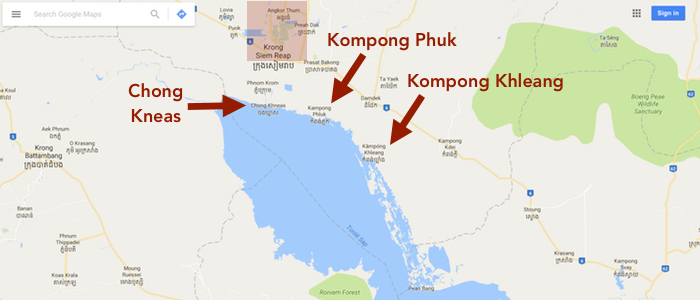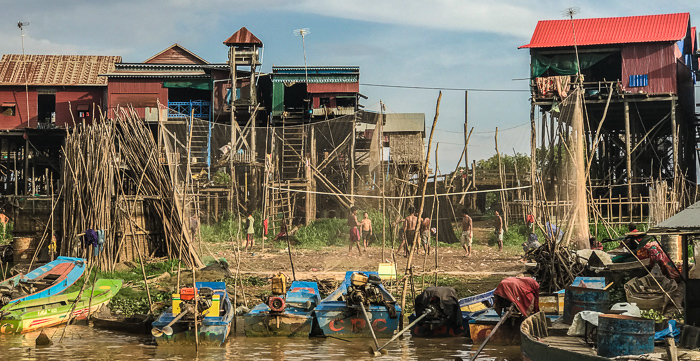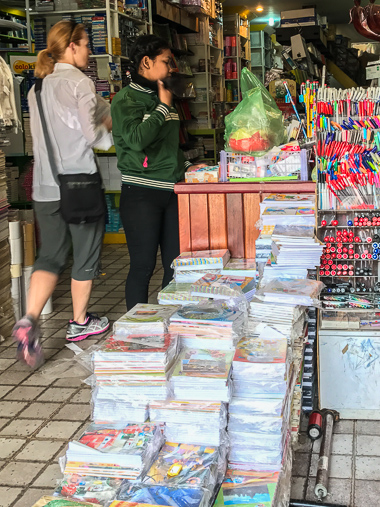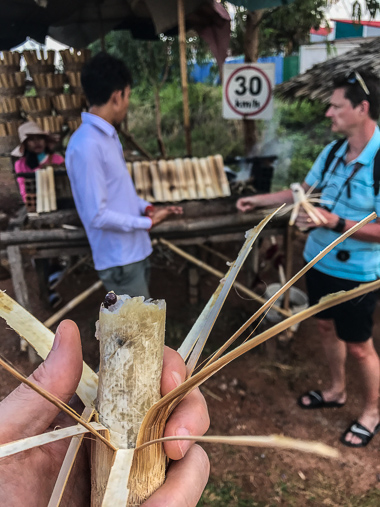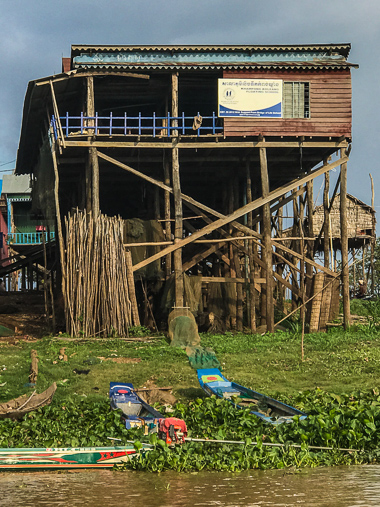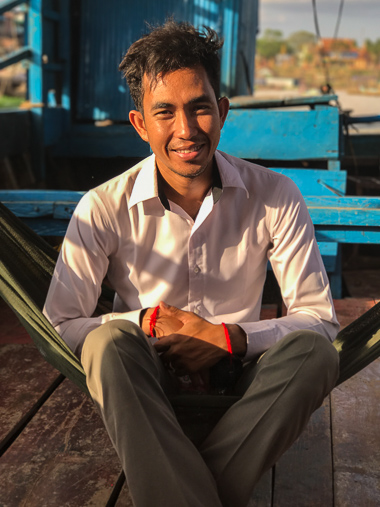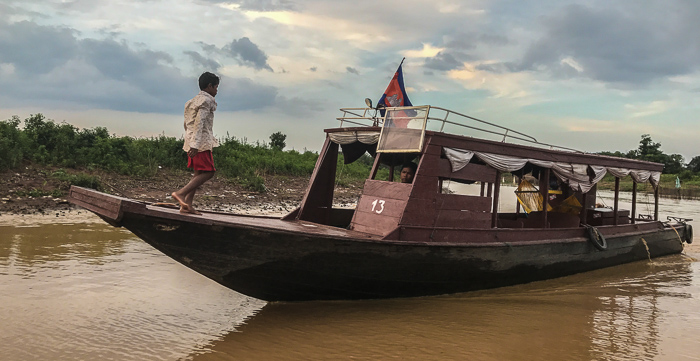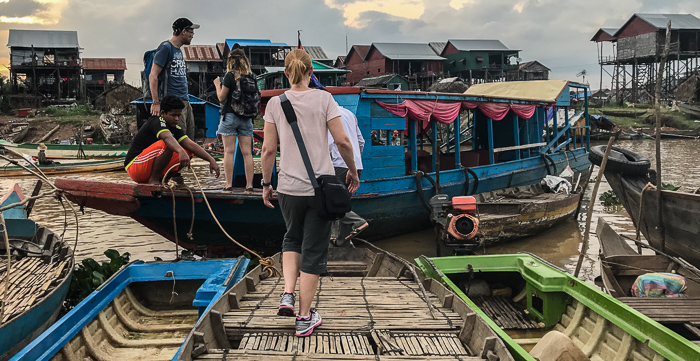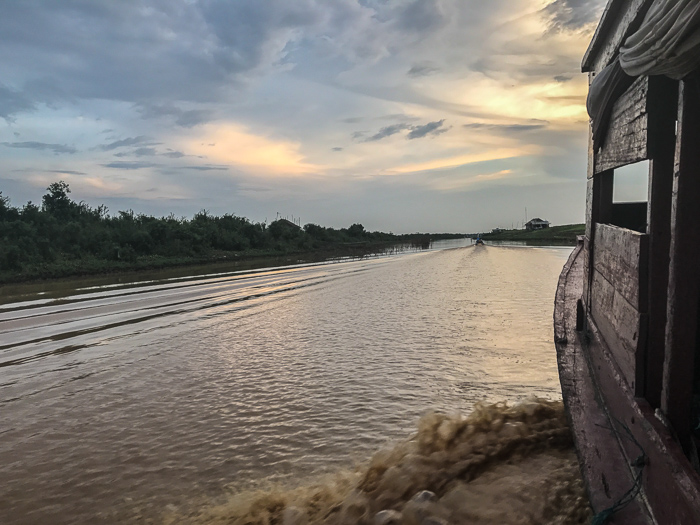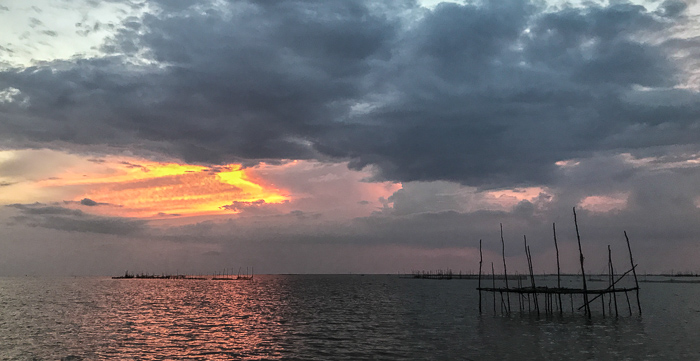A Siem Reap Tour that Gives Back: Community First Kompong Khleang Floating Village Tours
If you’re traveling to Siem Reap and would like to take a meaningful, responsible floating village tour, look no further. The Community First Kompong Khleang Floating Village Tour is the real deal. Paren, the main guide, grew up in Kompong Khleang, a portion of each tour fee (currently 45%) supports the local school and community, and tours have the approval of the village and commune chief. Need more convincing? Read this article that shares six reasons why Kompong Khleang is the best floating village to visit in Siem Reap.
With three full days in Siem Reap, we planned to visit the Angkor temple complex multiple times (to get the most out of a 3-day pass) and also explore the Cambodia Landmine Museum and Relief Center. That still left a half day to fill and a floating village tour seemed a perfect fit until I started researching in earnest and the negative reviews piled up; this blog post and this article are typical of what I found. Organized tours generally go to one of three floating villages: Chong Kneas, Kompong Phluk, or Kompong Khleang. Though good tours can be found, many are intrusive and give little to nothing back to each community while increasing air, water, noise, and garbage pollution.
Tours of Chong Kneas seem to be the worst of the lot, perhaps since the village is the closest to Siem Reap. Imagining what those tours might be like, I was reminded of an excerpt from Catfish and Mandala, a book written by Andrew Pham (An) whose family escaped Vietnam in 1977 and settled in California. An returned to Vietnam twenty years later to bicycle the length of the country, confront his personal demons, and find his roots. In Saigon, An speaks with Cuong, a Vietnamese tour guide. Cuong says he likes the work but An asks “But don’t you see the reactions on their faces when they see our squalor? Don’t you hear the things they say about us?” Cuong quietly replies “I do. I can’t help it but I do. I take them out on the Saigon streets, you know, the poor parts because they ask me. They want pictures. I see them flinch at the beggars, the poverty of the Vietnamese. The chicken-shacks we live in…. It’s very hard being a tour guide. Sometimes I feel like a pimp.”
Harsh words, but valuable to consider. In choosing to tour a floating village we were choosing to be intrusive on some level, but could we find a tour that didn't take advantage of the local community, or in the best of all worlds, positively impact the village and its residents? I believe the Community First tour provided such an opportunity, and we tried to do our part by educating ourselves in advance, and showing up with kindness in our hearts and an eager willingness to learn.
The Community First website is comprehensive and provides excellent detail about their floating village tour, including the fact that the tour changes depending upon conditions. Kompong Khleang lies on the Tonle Sap, the largest lake in Southeast Asia, whose level can rise over 30 feet in the wet season when the Mekong overflows and forces the waters of the Tonle Sap River to flow northward into the Tonle Sap. The waters recede south in the dry season revealing that many of those “floating” homes don’t actually float, but are built on impossibly tall stilts.
We visited in late April near the end of the dry season when water levels were low, and a confirmation email warned that we’d drive to and from the Bridge of Life School in Outaput (a small community in Kompong Khleang), then take a boat out onto the Tonle Sap. Of course the weather gods intervened delivering a brief but intense rain that turned the roads mucky and impassable, so back to Plan A to boat over to the school. I relay this experience simply to reinforce that each tour is unique - don’t get your heart set on a specific itinerary!
Our tour began at 2:25pm when Paren picked us up from our hotel in an old van. After gathering six other passengers, we set out for Kompong Khleang stopping twice along the way for snacks. The “Sticky Rice Village” stop was my favorite, though not a village per se but a long stretch of road lined with stands selling sticky rice treats steamed in bamboo. Paren taught us the proper bamboo-peeling technique to reveal the slightly sweet rice and mung bean mixture inside; as with many dishes in Southeast Asia, eating requires patience and process! The second stop was to include donuts but there were none to be had, so we stocked up on other snacks - much appreciated on the drive home later.
We arrived in Outaput at 4:40 after driving through numerous small villages with houses on stilts, and terrain that grew more verdant the closer we got to the Tonle Sap. As mentioned previously, conditions dictated a boat trip to the Bridge of Life School so we walked down to the bustling waterfront and loaded into a small boat for the 10-minute journey. To villagers here, as with others living on or near the lake, the lake provides both food and the main source of income. It is estimated that the Tonle Sap provides Cambodians with 60% of their protein and holds over 300 species of fish alone. While we passed through, villagers were busy unloading and packaging bags upon bags of snails.
We spent about 30 minutes in the village, first touring the Bridge of Life School and then briefly walking through the community. The school is a one room schoolhouse (on stilts like all the other houses) that currently serves 63 students in a pre-primary “kindergarten” program. School is a tough sell in this area for many reasons, not the least of which is that it takes time away from fishing. School also costs money so parents lose twice: paying for school and also losing income (and food) from fish the kids would have caught.
The Bridge of Life School is a non-profit program which offers a free education focusing on introductory reading, writing, and simple math. The school attempts to break down barriers to education in a few ways:
- Having a school right in the community makes it easier for children to attend. Parents don’t have to worry about young children taking long journeys to/from school, plus they don’t have to waste precious resources (time, fuel) shuttling them.
- While the Bridge of Life School is autonomous, kids who graduate from their kindergarten program can skip grade one and enroll in grade two at the public primary school. This saves parents money (since public school charges fees) and relieves overcrowding at the public school.
- In the wet season, a boat is required to transport students to the public primary school. Parents must either have an extra boat for the kids to use or take them, which again uses precious resources and takes time away from their livelihood. To help, the Bridge of Life School provides a school boat to transport kids in grades 2+ who have studied at the Bridge of Life School.
I believe their current budget is about $350/month which pays for the teacher, school supplies, and one-time expenses like desks and boards, but also supports other programming to support the community. They run “reverse tours” that take elderly villagers into Siem Reap to visit Angkor Wat (fantastic!) and are currently fundraising for bio-sand filters to provide clean water for about 20% of the village in a pilot program they hope to expand. Providing clean water is a critical need. Residents drink polluted water straight from the river and it’s estimated that 80–90% of the population has worms and parasites.
We were by impressed many things about the Community First tour and Bridge of Life program including their dedication to the community, their ability to do so much with so little, and their commitment to child safety. Before arriving in the village we were counseled to not touch or hold children and asked to please not post or share photos of them. They also explained why purchasing goods from children discourages education and encourages begging. We saw no young beggars on this tour, but certainly encountered many throughout Cambodia and Vietnam.
After the school/village tour, the rest of our time was spent motoring to and from the Tonle Sap on a narrow, shallow waterway. The journey was beautiful passing by floating homes, agricultural operations, and numerous clusters of staked fishing nets. Paren shared that there’s no need for signage on the nets; people simply know who they belong to and respect the claim.
Our journey took longer than planned since we became bogged down with a clogged water line, understandable given the extremely shallow water. We floated for a bit before our replacement boat arrived to whisk us the rest of the way. The delay truncated the tour slightly: we saw a beautiful sunset on the vast Tonle Sap but didn’t have time to tour a Vietnamese floating village as planned. That was okay by me; we had a peaceful ride, saw plenty, and I felt no desire to (potentially) intrude upon the villagers’ evening activities.
We arrived back at our van around 7pm and were dropped at our hotel about an hour later. Though Chris and I appreciated and enjoyed this tour start to finish, it may not be for everyone. Before booking, be sure to read the itinerary carefully understanding that it can change. The day can be tiring, spanning 5 1/2 to 6 hours in the afternoon/evening, wrapping up around 7:30 or 8pm. Visitors should be comfortable climbing into and out of boats, sometimes onto less-than-stable surfaces; at the school, our floating dock was an old wooden boat, so we stepped from our boat, to another boat, to the ground. There were always plenty of hands to help, but still a cautionary note. To be respectful, dress appropriately and modestly wearing clothing that covers shoulders and knees.
Minor cautions aside, we highly recommend the Community First Kompong Khleang Floating Village Tour. At the end of the day, I felt honored that Paren shared his village with us, and gratified to support a worthy program. If you’re traveling to Siem Reap, check them out! Tour fees currently support the school, reverse tours, and clean water project, and may eventually fund a community sewing co-op to purchase sewing machines and help locals learn a new vocation.
Tour Website: Community First: Kompong Khleang Floating Village Tours. Read their blog post telling why Kompong Khleang is the best floating village to visit in Siem Reap.
Cost: $35 USD per person; $25 for children under 12
Duration: Typically about 5.5 hours, 2pm–7:30pm. Snacks and water were provided, but the tour extends into the dinner hour so it could help to bring something (nuts, a granola bar, more water, etc.) to tide you over.
Booking: Please book directly through the Community First website so they can avoid paying “commissions” to hotels for the booking.
